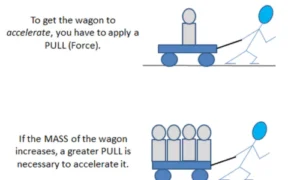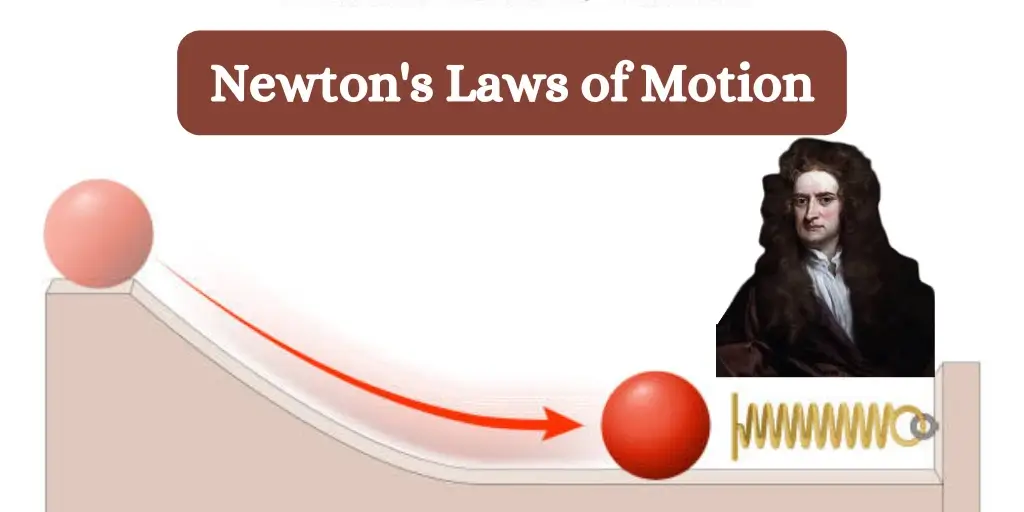Recently updated on December 19th, 2024 at 07:39 am
Sir Isaac Newton, one of the greatest minds in science, formulated three fundamental laws of motion that form the bedrock of classical mechanics. Modern physics laid the groundwork for Newton’s Laws of Motion, explaining how objects move. Let’s dive into each of these laws to understand their significance and application in our daily lives.
1. Laws of Motion First Law: The Law of Inertia

Definition: An object remains at rest or in uniform motion in a straight line until acted upon by an external force.
Newton’s law of motion introduces the concept of inertia, which is an object’s resistance to change in its state of motion. Essentially, an item will not start, stop, or change direction unless, of course, a force is applied.
Real-life examples:
- A book on a table remains at rest until it is picked up. In other words, it does not move on its own.
- An automobile travelling at a constant pace will continue to proceed until the brakes are engaged or an obstruction appears in its path. Consequently, it will maintain its speed unless acted upon by an external force.
This law explains why seatbelts are necessary. First, your body is in motion when driving. Consequently, if the car comes to a quick stop, inertia keeps you moving forward unless, of course, you are restrained by a seatbelt.”
2. Laws of Motion Second Law: Force and Acceleration

Definition: An object’s acceleration is proportional to its net force and inversely proportional to its mass. The relationship is represented as F = ma
Where:
- F is the force (in Newtons)
- m is the mass (in kilograms)
- a is the acceleration (in meters per second squared)
Insight: Lighter objects require less force to move or stop compared to heavier objects. Therefore, understanding this principle is crucial for various applications.
Real-life examples:
- Pushing a shopping cart: An empty cart takes less effort to push than a fully laden one. Thus, the weight of the load directly influences the amount of force needed.
- Sports: When a tennis ball is hit with more force, it moves faster, demonstrating how increased force causes acceleration. As a result, athletes often strive to maximize their force to improve performance.
3. Laws of Motion Third Law: Action and Reaction

Definition: Each action has a corresponding and opposing reaction.
This law emphasizes that forces are always paired. When one thing applies force to another, the second object replies with equal force in the opposite direction.
Real-life examples:
- Walking: When you push the earth back with your foot, it propels you forward with equal force, allowing you to move.
- Rocket launch: The rocket expels gases downward (action); in return,
it moves upward (reaction).
Applications of Newton’s Laws in Everyday Life
Newton’s rules are not only limited to physics textbooks; they have practical applications.
- Transportation: Understanding motion helps to create safer vehicles and roadways.
- Sports: Coaches apply these laws to help athletes perform better.
- Engineering: From bridges to aeroplanes, engineers use these concepts to ensure safety and efficiency.
Conclusion
Newton’s laws of motion offer a straightforward but fundamental description of how objects move and interact. These rules, whether they apply to planet motion or bicycle mechanics, help us comprehend and predict the physical world around us. Understanding these principles allows us to better appreciate the science that regulates our universe.






